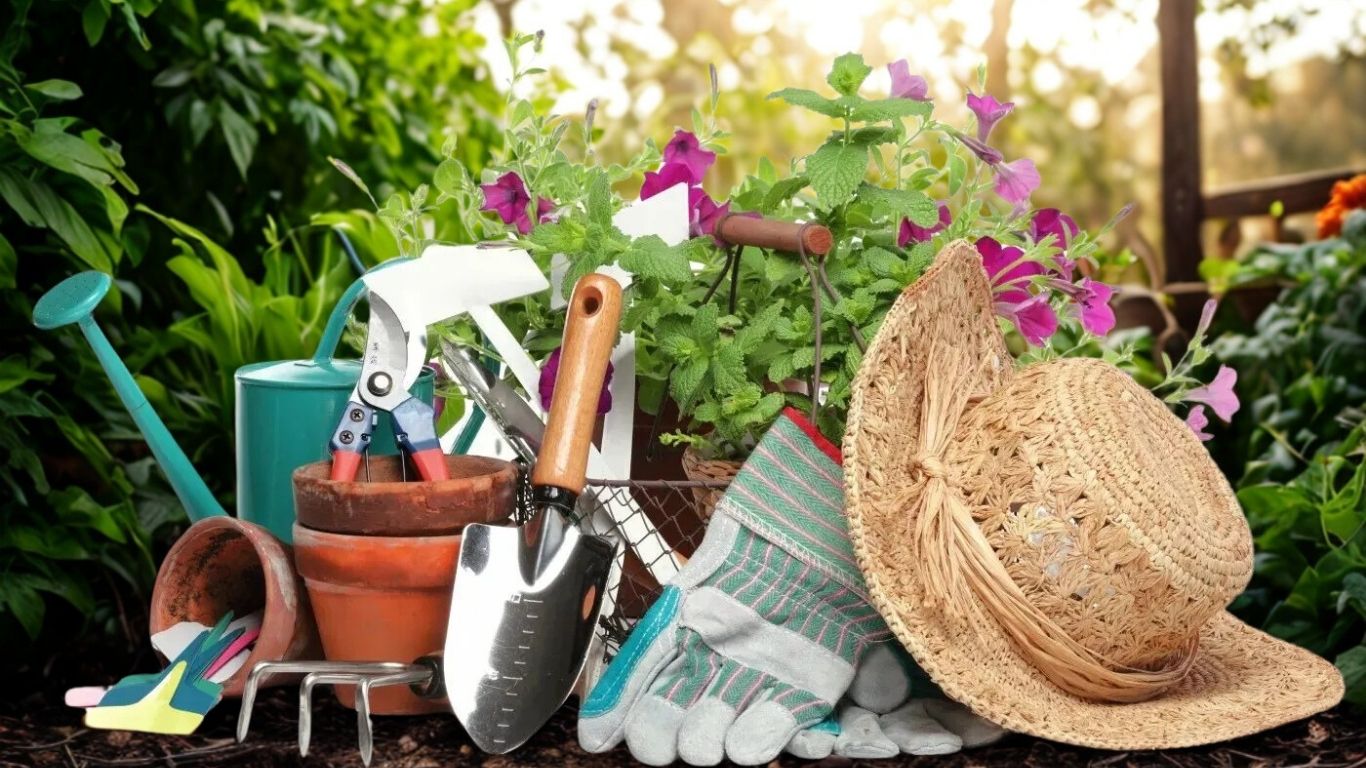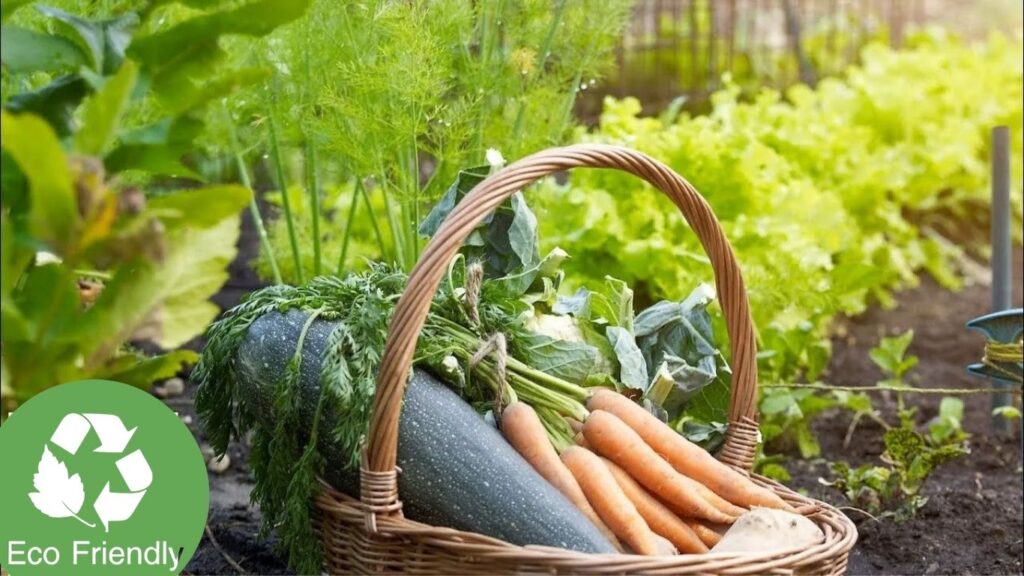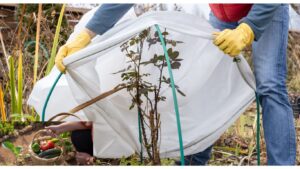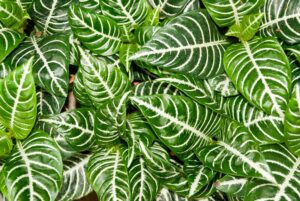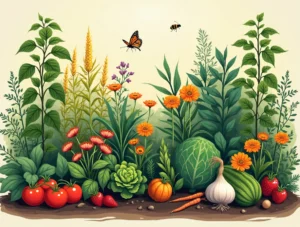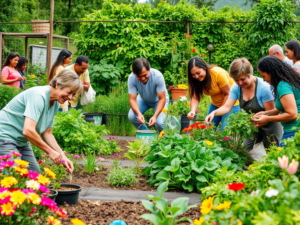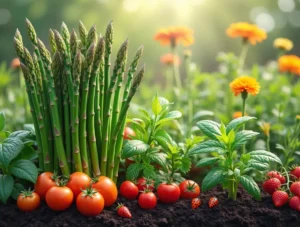Creating a sustainable and eco-friendly organic garden is more than just a hobby; it’s a powerful way to contribute to the health of our planet while enjoying the beauty and bounty of nature. In an era where environmental consciousness is crucial, sustainable gardening offers a holistic approach that minimizes environmental impact while promoting biodiversity and resource efficiency. Traditional gardening methods, though aesthetically pleasing, often come with significant drawbacks, such as excessive water usage, soil degradation, and increased carbon footprints. In contrast, sustainable gardening practices not only reduce these negative impacts but also enhance the overall health and resilience of your garden. This article provides a comprehensive guide to help you transform your green space into a sustainable and eco-friendly organic garden, highlighting key practices and their long-term benefits.
Create a Sustainable and Eco-Friendly Organic Garden
On This Page
Foundation of Sustainable Gardening
Understanding Your Local Ecosystem
The first step in sustainable gardening is to familiarize yourself with your local ecosystem. This involves understanding the climate, soil type, and native plant species in your area. By aligning your gardening practices with the natural environment, you can create a garden that thrives with minimal intervention.
Assessing Your Garden Space and Conditions
Before diving into gardening, it’s essential to assess your garden space. Consider factors such as sunlight exposure, soil quality, and available water sources. Conducting a soil test can provide valuable insights into nutrient levels and pH balance, guiding your planting decisions.
Setting Realistic Sustainability Goals
Setting achievable sustainability goals is crucial for long-term success. Whether you aim to reduce water usage, eliminate chemical fertilizers, or create a wildlife-friendly garden, defining clear objectives helps keep your efforts focused and measurable.
Planning Your Garden Layout for Optimal Resource Efficiency
Efficient garden planning is key to maximizing resource use. Design your garden to optimize sunlight exposure, minimize water runoff, and create microclimates that support diverse plant life. Consider using raised beds or vertical gardening techniques to maximize space and reduce soil compaction.
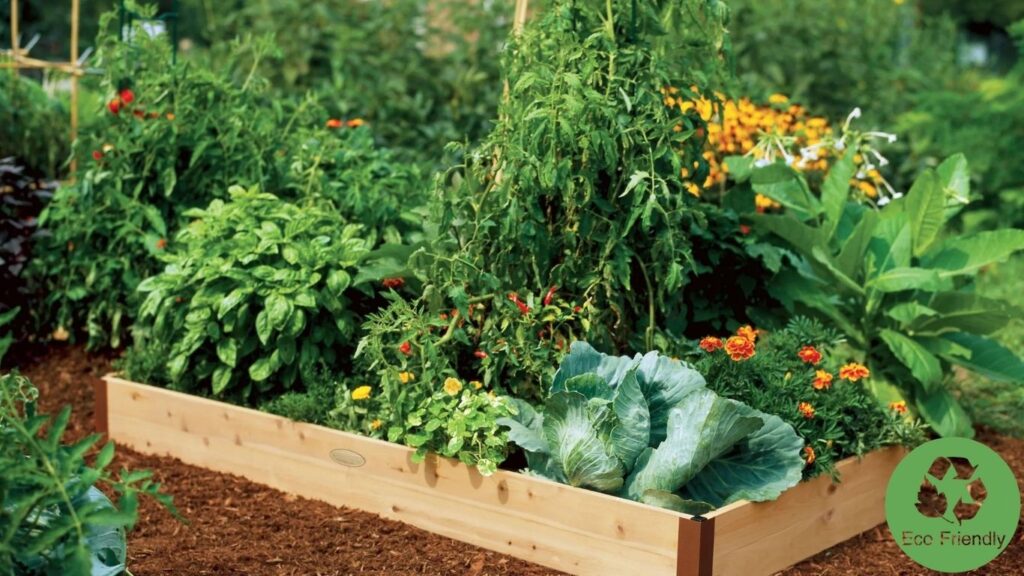
Building Healthy Soil Naturally
The Importance of Soil Health in Sustainable Gardens
Healthy soil is the cornerstone of a sustainable garden. It supports plant growth, retains moisture, and sequesters carbon. By fostering soil health, you create a resilient garden that requires fewer inputs and produces higher yields.
Creating and Maintaining a Composting System
Composting is a natural way to enrich your soil with organic matter. Start by setting up a compost bin or pile, adding kitchen scraps, yard waste, and other organic materials. Regularly turning the compost helps accelerate decomposition, resulting in nutrient-rich compost that can be added to your garden beds.
Using Organic Amendments and Fertilizers
Opt for organic amendments and fertilizers to nourish your soil. Materials like aged manure, bone meal, and fish emulsion provide essential nutrients without the harmful chemicals found in synthetic fertilizers. These natural alternatives promote beneficial microbial activity and improve soil structure.
No-Till Gardening Methods and Benefits
No-till gardening minimizes soil disturbance, preserving its natural structure and reducing erosion. Instead of turning the soil, use mulch and cover crops to suppress weeds and add organic matter. This method enhances soil health, conserves moisture, and reduces the need for tilling equipment.
Water Conservation Strategies
Installing Efficient Irrigation Systems
Efficient irrigation is vital for water conservation. Drip irrigation and soaker hoses deliver water directly to plant roots, reducing evaporation and runoff. These systems can be automated with timers to ensure consistent watering, saving both time and water.
Rainwater Harvesting Techniques
Capturing rainwater is an excellent way to supplement your garden’s water needs. Install a rain barrel or cistern to collect runoff from your roof. This collected water can be used for irrigation, reducing your reliance on municipal water supplies.
Drought-Resistant Gardening Approaches
Selecting drought-resistant plants is crucial for water-efficient gardening. Native plants, succulents, and xeriscaping techniques can help create a garden that thrives with minimal watering. Grouping plants with similar water needs also optimizes irrigation efficiency.
Mulching Methods for Moisture Retention
Mulching is a simple yet effective way to retain soil moisture. Organic mulches like wood chips, straw, and leaves create a barrier that reduces evaporation and suppresses weeds. As mulch decomposes, it also adds valuable organic matter to the soil.
Plant Selection for Sustainability
Choosing Native Plants for Your Region
Native plants are well-adapted to local conditions, requiring less water, fertilizer, and maintenance. They also support local wildlife by providing food and habitat. Research native plants suitable for your area and incorporate them into your garden design.
Best Perennials for Long-Term Sustainability
Perennials offer long-term benefits in sustainable gardens. They return year after year, reducing the need for replanting and minimizing soil disturbance. Choose perennials that are hardy, low-maintenance, and attractive to pollinators.
Creating Biodiversity in Your Garden Space
A diverse garden ecosystem is more resilient and productive. Mix a variety of plant species, including flowers, herbs, and vegetables, to attract beneficial insects and deter pests. Creating layers of vegetation, from ground covers to trees, also enhances biodiversity.
Planting for Year-Round Interest and Harvest
Plan your garden to provide visual interest and harvestable produce throughout the year. Incorporate evergreen plants, winter-hardy vegetables, and flowering perennials that bloom at different times. This approach ensures a vibrant and productive garden all year round.
Natural Pest Management
Attracting Beneficial Insects and Wildlife
Encourage beneficial insects and wildlife by providing habitats and food sources. Planting flowers that attract pollinators and predatory insects can help control pest populations naturally. Birdhouses and bat boxes also attract creatures that prey on garden pests.
Companion Planting Strategies
Companion planting involves growing plants together that benefit each other. For example, marigolds repel nematodes, while basil attracts pollinators and deters pests. Research companion planting combinations to enhance your garden’s health and productivity.
Organic Pest Control Solutions
When pests do appear, opt for organic control methods. Neem oil, insecticidal soap, and diatomaceous earth are effective against many common garden pests without harming beneficial insects or the environment.
Creating Balanced Garden Ecosystems
A balanced garden ecosystem supports natural pest control. By fostering biodiversity and avoiding chemical pesticides, you create an environment where pests are kept in check by natural predators and beneficial organisms.
Reducing Garden Waste
Composting Garden Debris
Composting garden waste is a sustainable way to manage debris while enriching your soil. Leaves, grass clippings, and plant trimmings can all be composted. Regularly adding compost to your garden beds improves soil health and reduces the need for synthetic fertilizers.
Repurposing Materials in the Garden
Get creative with repurposing materials in your garden. Old pallets can become raised beds, while broken pots can be used as drainage layers. Reusing materials reduces waste and adds character to your garden.
Sustainable Garden Supplies and Equipment
Choose sustainable garden supplies and equipment made from recycled or renewable materials. Look for tools with ergonomic designs that reduce strain and promote efficient gardening practices.
Creating Closed-Loop Systems
A closed-loop garden system aims to recycle all resources within the garden. This includes composting waste, using rainwater for irrigation, and saving seeds for future planting. By minimizing external inputs, you create a self-sustaining garden that is both eco-friendly and cost-effective.
Growing Food Sustainably
Planning an Organic Vegetable Garden
Growing your own vegetables is a rewarding way to contribute to sustainability. Plan your garden to maximize space and sunlight, using techniques like square-foot gardening or raised beds. Choose organic seeds and seedlings to start your garden.
Crop Rotation and Succession Planting
Crop rotation helps prevent soil depletion and pest buildup. Rotate vegetable families to different beds each year, ensuring balanced nutrient use. Succession planting involves staggering plantings to extend your harvest season, providing fresh produce throughout the growing season.
Seed Saving Techniques
Saving seeds from your garden is a sustainable practice that preserves genetic diversity and reduces reliance on commercial seed suppliers. Learn to save seeds from open-pollinated and heirloom varieties, ensuring a continuous supply of seeds for future seasons.
Extending Your Growing Season Naturally
Extend your growing season by using natural methods like cold frames, row covers, and hoop houses. These structures protect plants from frost, allowing you to start seeds earlier and harvest later in the season.
Conclusion
Sustainable gardening offers a wealth of benefits, from reducing environmental impact to creating thriving, resilient ecosystems. By implementing key practices like building healthy soil, conserving water, and promoting biodiversity, you can transform your garden into an eco-friendly haven. The long-term environmental benefits of sustainable gardening are undeniable, making it a crucial practice for anyone concerned about the health of our planet. We encourage readers to take the first step towards sustainability by adopting these practices in their own gardens. Together, we can create a greener, more sustainable future.
Recommended Books
- The Vegetable Gardener’s Bible by Edward C. Smith
- Gaia’s Garden: A Guide to Home-Scale Permaculture by Toby Hemenway
- The Rodale Book of Composting by Grace Gershuny and Deborah L. Martin
Seasonal Maintenance Checklist
- Spring: Prepare soil, start seeds indoors, plant cool-season vegetables, and set up irrigation systems.
- Summer: Monitor water usage, weed regularly, and harvest vegetables.
- Fall: Plant cover crops, collect and compost garden debris, and prepare garden beds for winter.
- Winter: Plan for the next season, order seeds, and maintain garden structures.
FAQs about Common Sustainable Gardening Challenges
How do I deal with invasive weeds?
Use mulch and ground covers to suppress weeds. Hand-pulling and spot-treating with vinegar-based solutions can also be effective.
What are the best practices for composting kitchen scraps?
Avoid adding meat, dairy, and oily foods to your compost. Turn the pile regularly to aerate it and speed up decomposition.
How can I attract more pollinators to my garden?
Plant a variety of flowers that bloom at different times, provide nesting sites for bees, and avoid using pesticides.
